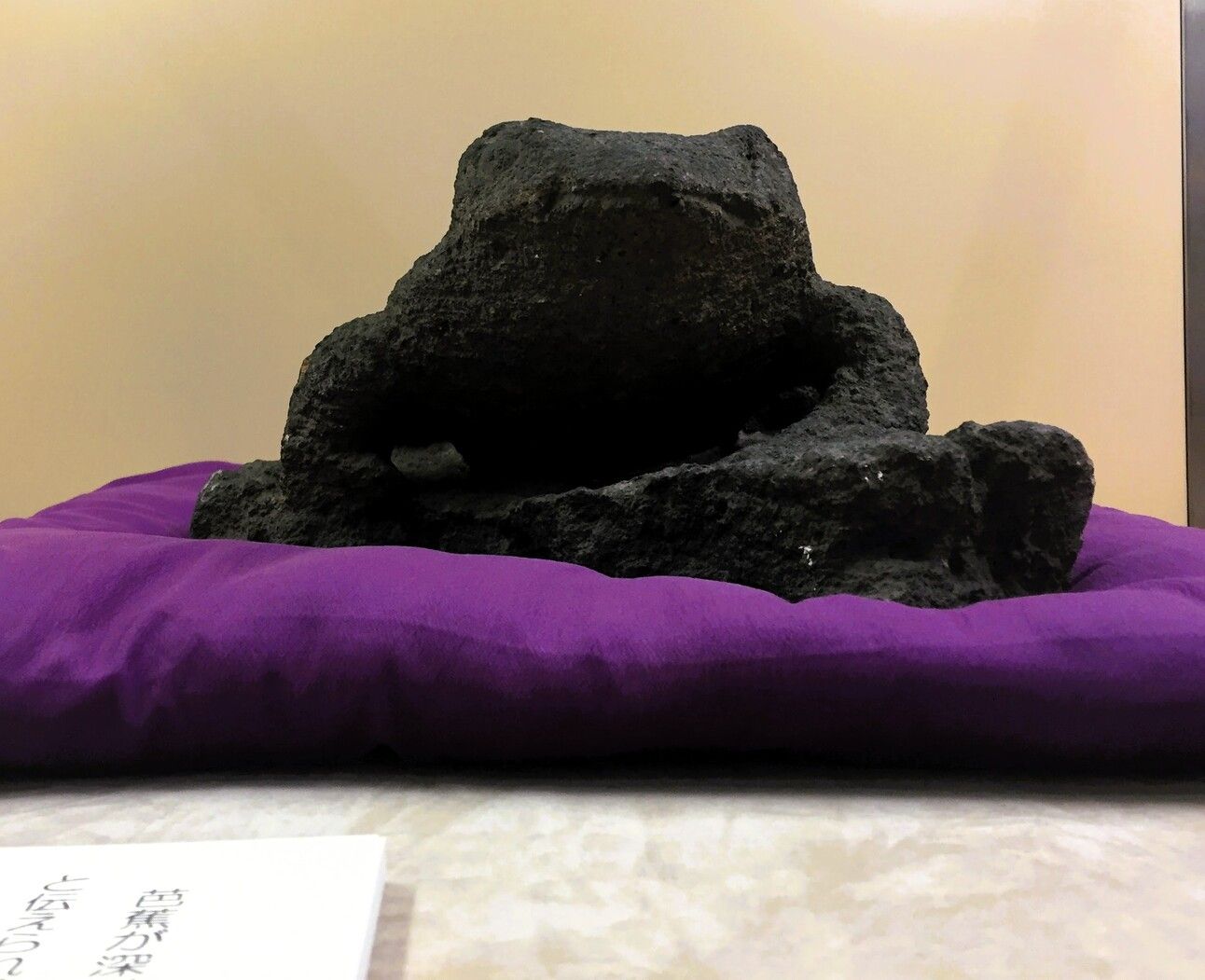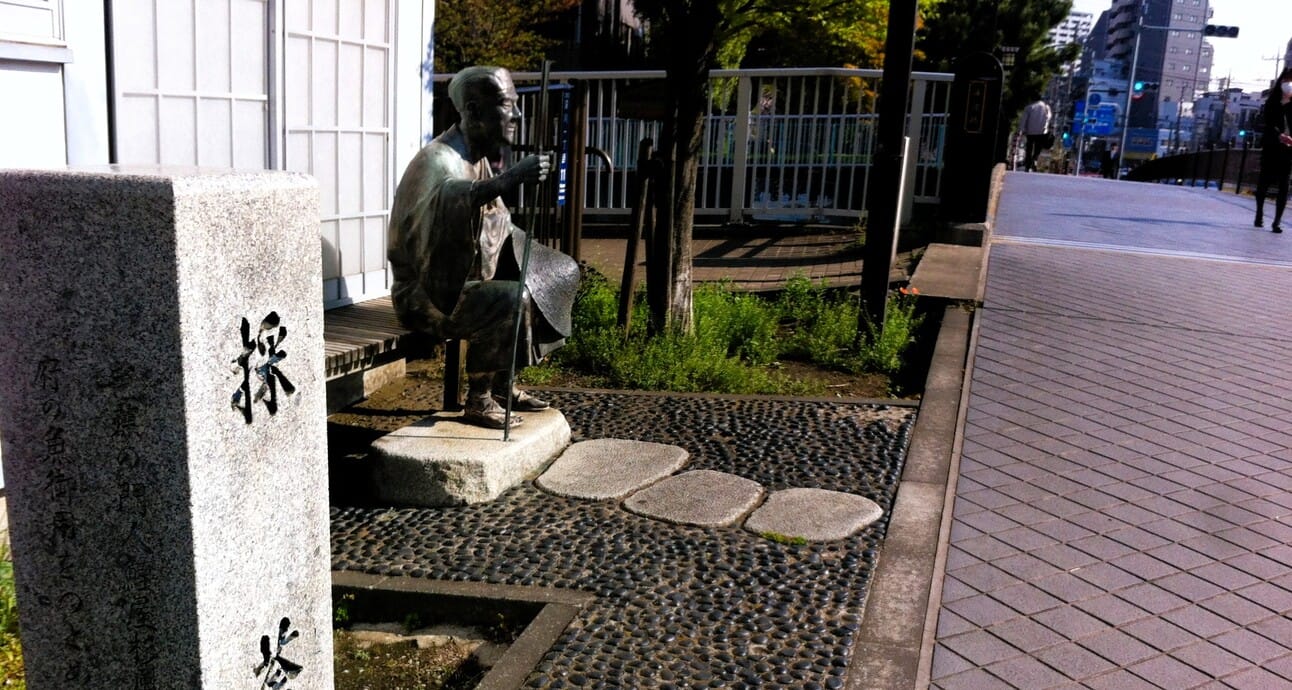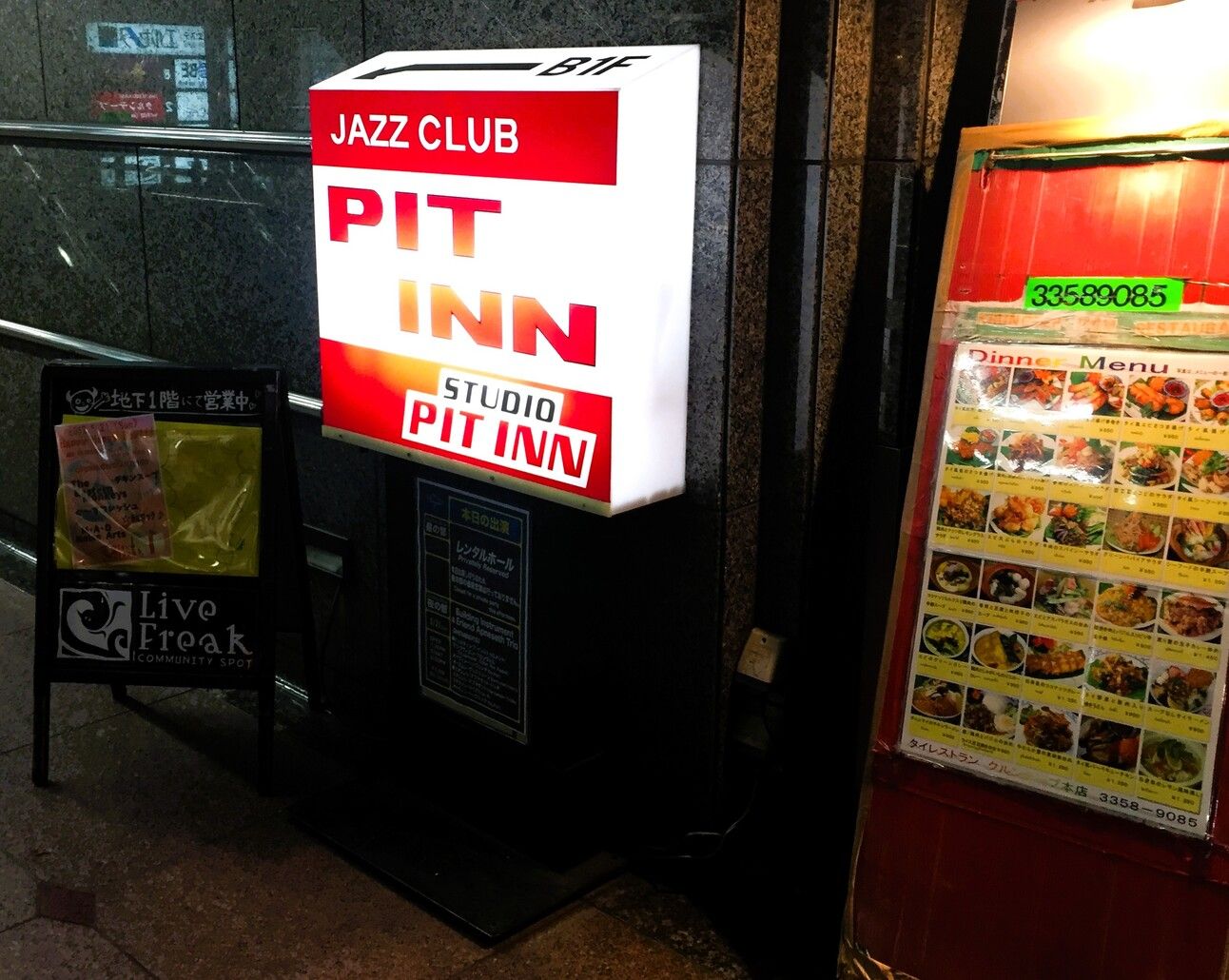- Desire Paths
- Posts
- The Wandering Stream
The Wandering Stream
What does it mean to create art in a technological age?
The wandering stream
There’s a Japanese tradition, dating from the 9th century, called the Wandering Stream Banquet. Strategically placed poets wait, with table and brush, near a garden stream for poetry. Poetry arrives on a paper boat, sent by the poet upstream. The poet unwraps the words, adds their own lines, and sends them drifting down to the next poet. Eventually they create a series of shifting, witty, loosely interconnected renga.
Art is a wandering stream. Poetry and music float to us from past practitioners and artists (however amateur) pick up stray lines, gentle riffs, contrary notes. Encountering these gifts, they are sometimes met with inspiration to coalesce those echoes into a new song. This inspired state is accessible to any human and has nothing to do with the subjective quality of the art or its monetary worth; it’s just a thing that humans do. What we sing also sings the past. In the singing of it, we let it go. The notes, the words, sail off… perhaps picked up by another person, downstream. Perhaps not.
It takes many rivers of water to cool the massive databanks needed to generate A.I. music. But for all the cooling water it requires, generative A.I. has no access to the river of song. Imagine we trained an A.I. on every Muddy Waters song ever recorded. A “Large Muddy Model.” Now imagine the “new” song it could iterate. Even if the song was subjectively good, it would connect to nothing, be inspired by nothing, and offer nothing human. The swirling music of a very expensive toilet bowl.
Haiku and the open image

Rikugien Park in Tokyo — it’s made of poetry. (Literally, each section is a scene from a poem.)
I owe a debt to this book: The Art of Haiku by Stephen Addiss. If you are new to haiku, this is the place to start. Addiss provides a sense of the poetic river, from Chinese forms adopted by Japanese poets, to tanka, renga, hokku, etc. A wonderful eddy of interrelated forms – all there for us to take up, add our lines, and send away. From haiku’s greatest practitioner, Basho (1644-1694), to his disciples, to Issa and Shiki in the 19th century. If you dip your mind into this stream, you’ll find the marvelous possibilities of haiku.
In preparation, English speakers need merely forget of two notions about haiku: slavish syllable counting and any thought that a haiku provides an aphorism, fit for a poster in an insurance company office.
Aphorisms are fine but they are closed. Haiku images are open.
how many memories
flood my mind —
cherry-blossoms
Open images are images you can return to again and again, like a garden, and find new meaning in the same old flowers. Read the poem above a few times:
Cherry blossoms.
Spring.
Memories….
I am in the image. I am old. My memories, a flood. A burden. The heaviness of memory. The lightness, delicacy, brevity of cherry blossoms. The melancholy spring mix of beauty, age, memory, and color. I can live in the image. It’s open. It invites me in.
Throughout centuries of haiku, certain images return again and again. Not repeated, but within new contexts and in dialogue with the past. Don’t get me started on the frog. The frog leads to mental breakdown, speaking personally.
the frog never jumps
into the sound of water —
I have lost my mind.

A f!@!&ing frog. From the Basho Museum in Tokyo.
A haiku can tell a story in an image:
although divorced
she goes into his field
to help plant rice
Haiku topics are human. Even when they are about mountains, flowers, and butterflies, they are about human experience. Other common haiku topics: Lice, mosquitoes, rain, worms, bowels, mud, illness, spiders, sex, wickedness, death, war, friendship…
A straight hole
from pissing in the snow
by my gate
Haiku sometimes uses repetition to great effect.
my lost mother —
every time I look at the sea
every time I look
This short lesson brought to you by the commonly underestimated arts council: haiku and blues division. Their long histories, apparent simplicity, and range of influence connect them. (Or, at least, make them interesting to think about together.) Also: they are available and accessible to anyone who wants to dive in.

Basho — always about to take that first step on the way. Even as the Tokyo traffic encroaches.
See me hug my pillow
The river of forms flows around the world. Ezra Pound became an imagist after studying Chinese and Japanese poetry. Previous to Pound, the open image wafted from Japan to Adelaide Crapsey (gone too soon!) and through them to Sylvia Plath and others. Art became modernist because of the simplicity of the open image.
The blues, whose river is the Mississippi and whose waters are muddy, is haiku-like in its’ directness.
You know, I let her down with a golden chain
And every link I would call my Crow Jane's name —
Crow Jane, Crow... Crow Jane, Crow...
A golden chain attached to a casket is a beautiful image for regret. Crow Jane, the woman whose water you never miss until your well runs dry, is lowered into her grave with a golden chain. That chain binds Jane to the singer. It also binds him, alive, to death.
The “crow” can mean many different deep, historical things. (Do your own digging.) But we can just live in the painful, repeated sound of “oh” for now.
We find ourselves chained to Jane, to regret, to beginningless beginning and endless end… images as deep and present and playful and interesting as any haiku.
Like haiku, the blues has a set of traditional images that appear in different guises, the meaning shifting with each iteration.
Make Me a Pallet on the Floor
Well, I'm goin' up the country where the weather suits my clothes
Ain't no tellin' how much further I may go
Goin’ Down The Road Feelin’ Bad
I'm goin' where the weather suits my clothes
And I ain't gonna be treated this a-way
Down South
Now an' I'm goin' back down South
Man, where the weather suits my clothes
Now, I done fooled around in Chicago
Yank, I done almost froze
In the first example, the singer is traveling home. In the next, the singer is in jail, missing home. In the last the singer is misplaced up north. “Where the weather suits my clothes” is an image that contains the whole history of the great migration. Or it might not, depending upon where the line is placed. But it echoes that history regardless. It is a brilliant, succinct, visual, precise way of missing home – where the weather suits.
Some version of “see me hug my pillow where my baby used to lay” is another open image that can be plugged into various contexts in various ways for effect.
Blues can be about all the things haiku is about. It can be about a good day, drunkenness, poverty, cheating, lying, sex (of course), illness, death, work, beauty, health insurance...
Or it could be about the one time you saw a beautiful woman carrying two bowls of cherries, crying. Then you never saw her again.
Now, I left cherry ball
Standin' in the back do' cryin'
Of course, I feel her condition
But her trouble ain't none a-mine —
She's just like a spider
She's hangin' on the wall
This machine iterates nonsense
These quick dips into haiku and blues are just to make a small point, perhaps obvious but worth saying, that just as art is connected to the time and place of its making, it is also connected to the past, to the future, and to the human world of form and image.
A generative A.I. program can pollute our rivers, if prompted, with a million haiku or blues songs in a matter of seconds. Some of them might even be “good”. But they will never connect to the river of song, the river of form, the river of image. The point of creating art is not to be good or bad or generate wealth or boost your ego but to be human. In art we (all of us) accept the past and send our creation (or just appreciation) down the river to the next artist.
Iterated generative A.I. content is banal product. It can only be this, no matter how human-like the music, because it cannot connect to human experience or history.
Blues Haiku
For no other reason but joy, here are three attempts at blues haiku. A blues haiku is half blues inspired; half haiku inspired. Try it out, all it takes is a shot of blues. A draught of haiku. Don’t worry about syllable count. Throw in some common images from each and put them in a new context. See if you can make your image open – a place you can return to over and over again. If you want, send them to me. Or just float them down the river.
Iowa City, winter
her arms only a brief
shelter. see me hug my pillow —
the sound of rain
Winter garden
coneflower heads capped
with snow. Nostalgic for home
while home — Chicago.
In the men’s room of the Metro2
trough urinal — sweet
beer piss. Even the moon is
loaded and can’t drive home.

If you’re ever in Tokyo, write some blues-haiku at the Pit Inn — best jazz/blues club in the city!
All photos by me. All translations of haiku by Stephen Addiss.
Next time: What is technology in a technological age? (Whoa… dude.)
Desire Paths drops into your mailbox every two weeks so as not to bother you too much. If you didn’t like this one, maybe you’ll like the next one? Or a past one? If you liked this essay, please shout, skeet, post, link, boost, or write about it in pink sidewalk chalk in the rain.
1 “Where the weather suits my clothes” is most famous from the song “Everybody’s Talkin’” sung by Harry Nillson for the film Midnight Cowboy. The wandering stream challenges the next artist add to, change, make the previous image new – which is somewhat different from simply copying the line.
2 Vibing with E. Pound’s Metro haiku, I am referring to the music club “The Metro” in Chicago, where the urinals should be in the Historic Registry; they have not changed in 30+ years.

Reply